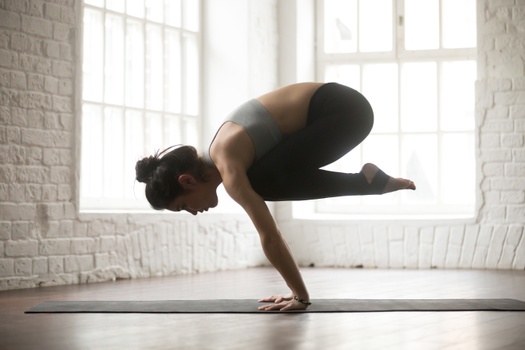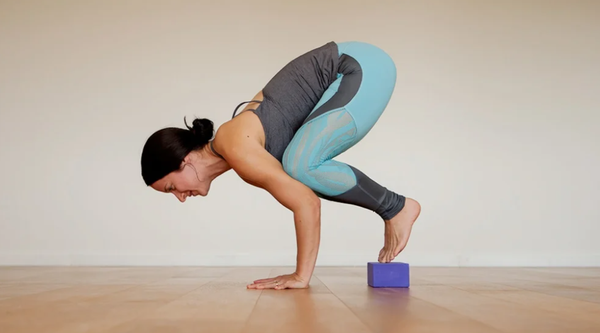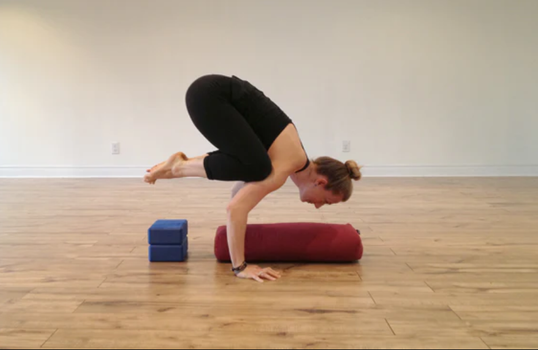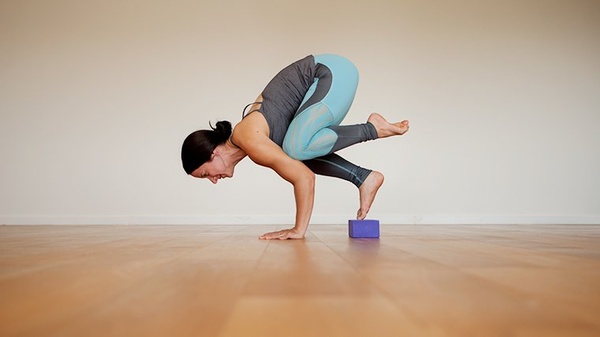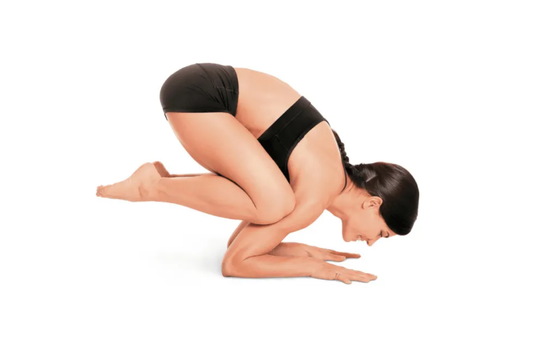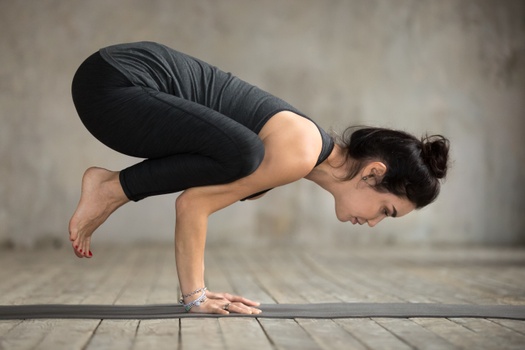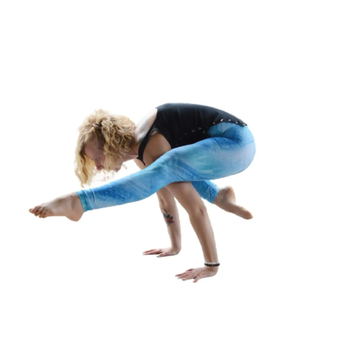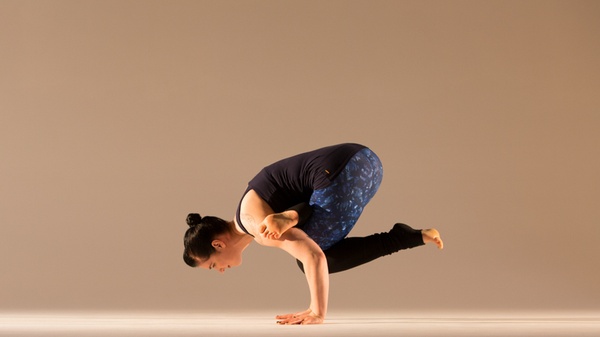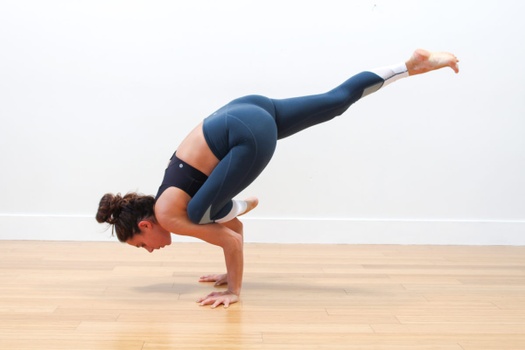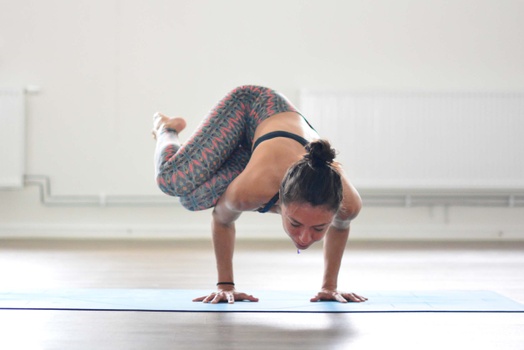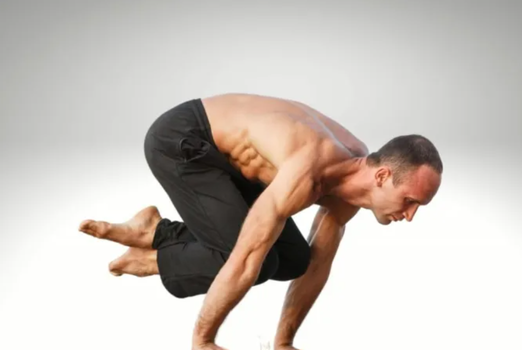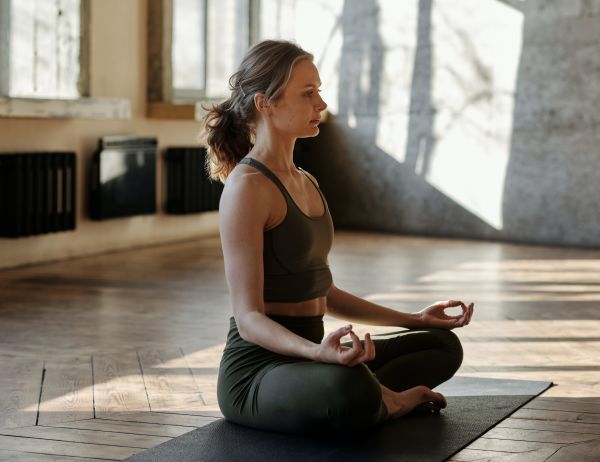Crane Pose is an advanced yoga asana, so beginners should divide their practice into a few segments for better understanding and speedy progress.
Below, we have divided this asana practice into four main parts – starting with warming up, moving to the main asana steps, correcting your posture, and relaxing your tensed muscles.
Lastly, for beginners as well as intermediates, we have added pose modifications and variations to adjust their Bakasana practice as per their comfort.
Part 1: Preparation for Bakasana
The following are some warm-up poses that you should practice to activate the glutes, core, wrists, and forearms before moving into Crane Pose.
1. Malasana (Garland Pose) - Malasana or the Yogi Squat is a deep hip opening position in yoga. This pose will quickly stretches your pelvis and improves blood circulation from your tailbone to your toes.
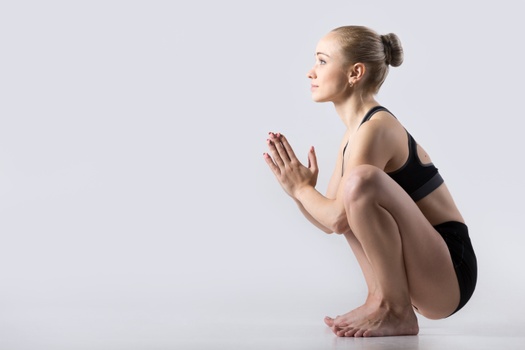
Simply squat with your thighs pointing outwards and hold your pelvis close to the ground. Keep the arms in a prayer position and adjust the resistance in your thighs and hip flexors with your elbows. Hold this pose for 1 to 5 minutes.
2. Navasana (Boat Pose) -
This is an excellent yoga asana for total core activation and strengthening. Sart by sitting in Staff Pose, bending your knees, lifting your legs off the mat, and engaging your core while shifting your body weight onto your tailbone.
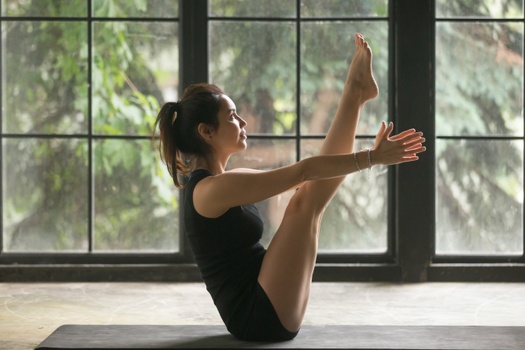
Hold here and maintain the posture for a few seconds, for 4 to 5 rounds. This pose will help you hold Crane Pose for longer intervals.
3. Chaturanga Dandasana (Four-Limbed Staff Pose) - To activate essential body parts like the wrists, forearms, and shoulders, practice Chaturanga Dandasana before Crane Pose.
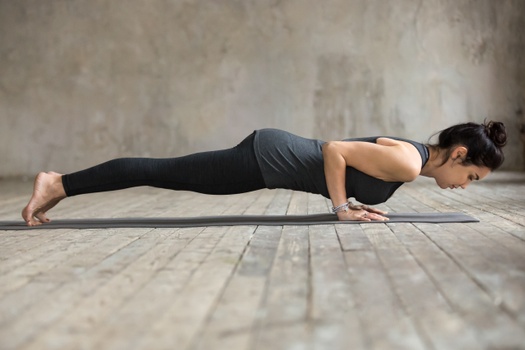
Start in Downward-Facing Dog, move into a high plank, and bend your elbows to get into Chaturanga Dandasana. Hold this low plank for a few seconds and repeat for 5 to 10 rounds.
Part 2: Step-by-Step Instructions to Perform Bakasana
The following are steps to practice Bakasana or Crane Pose:
Step 1- Squat in the middle of your mat, with your elbows resting on the inside of your knees.
Step 2- Keep your head straight, heels lifted off the mat, and your hands in a prayer position in front of your chest.
Step 3- Place your palms down, align them with your ankles, and spread your fingers wide to grip the yoga mat.
Step 4- Next, fix your gaze on the mat, and engage your shoulders as well as your core muscles. Now, bend your upper body slightly forward and try to lift your feet off the mat.
Step 5- Concentrate on your breath and one-by-one lift your feet off the mat. Finally, press your arms into as straight a position as possible, and hold this position here for a few seconds.
Breath Awareness:
Inhale: When your palms are on the floor and you’re engaging your core.
Exhale: When you lift your feet off the mat and balance your body in this pose.
Performance Duration for Beginners: Hold Crane Pose for 15 to 30 seconds.
Performance Duration for Advanced: Hold Crane Pose for 30 to 90 seconds.
Part 3: Things to Keep in Mind
Due to the level of physical and mental challenge involved in the execution of Bakasana, you must be very mindful of your mind and body in order to balance.
If you’re not focused, even a minor alignment issue can cause extreme physical injury and pain in the long term. So, below are some Crane posture cues to be mindful of:
Engage your core and shoulders: If you’re feeling super shaky and you’re unable to lift your legs off the ground, this means you’re not engaging the right muscle groups.
Always keep your traps, shoulders, and core muscles tightened for a stable hold during Bakasana.
Don’t rush it: When you are in a rush to perform Bakasana pose, you can potentially dislocate your knees, elbows, or wrist joints. That’s why a mindful approach is necessary for Crane Pose.
Stay focused on your breath, be calm, lift one foot at a time and fix your gaze as you hold the pose with raised legs.
You’re not rounding your spine: This is probably the most underlooked aspect of Crane Pose. Many people don’t realize that a rounded back can actually help them engage their core even more profoundly, as well as increase the duration of their holds.
Fingers are not gripping the mat: One more reason for a wobbly crane position is the foundation of your wrist. You need to spread all your fingers and press them into the mat.
If your wrists are weak or your palms are not properly gripping the yoga mat, then there’s a high chance your wrists could become severely injured.
Part 4: Relaxing Poses After Bakasana
Below are some relaxing poses that you can perform after an intense Bakasana practice session:
1. Ustrasana (Camel Pose) - This posture acts as a counter pose that can help you relax your trapezius, shoulders, and core muscles.
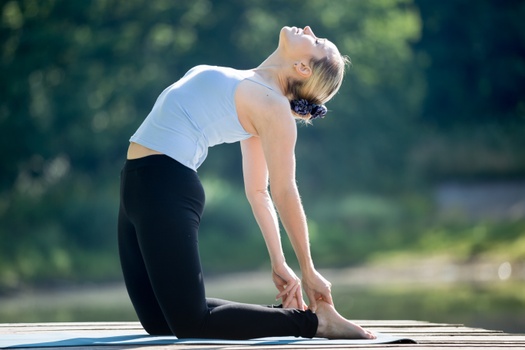
Kneel on your mat, tuck your tailbone, and gently arch your lower back. Gently drop your neck back, hold your ankles with your hands, and hold this pose here for 30 to 60 seconds.
2. Balasana (Child’s Pose) - Relax your back muscles from extreme arching and rounding with Child’s Pose. From Camel Pose, sit back on your shins and bend your upper body in front.
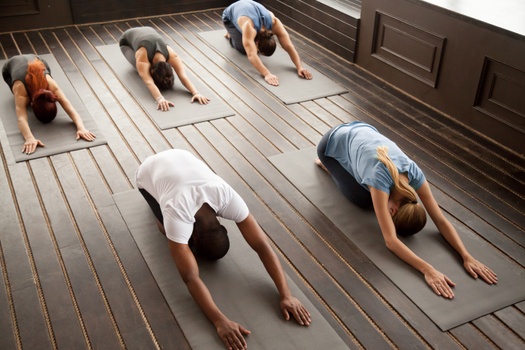
Keep your head relaxed and your spine extending forward. Hold this pose here for as long as it takes for your spine to return to its neutral shape.
